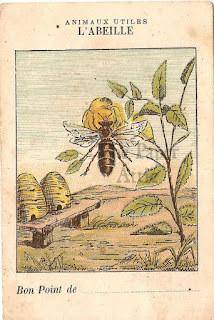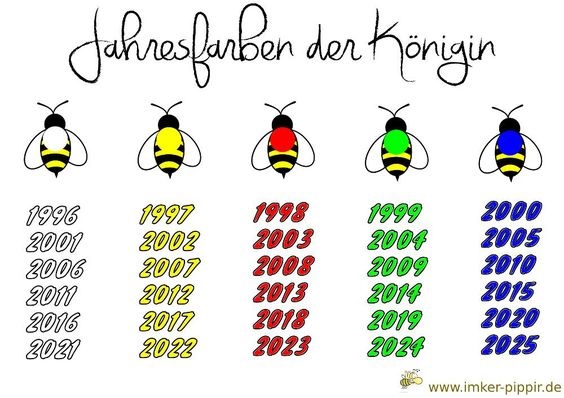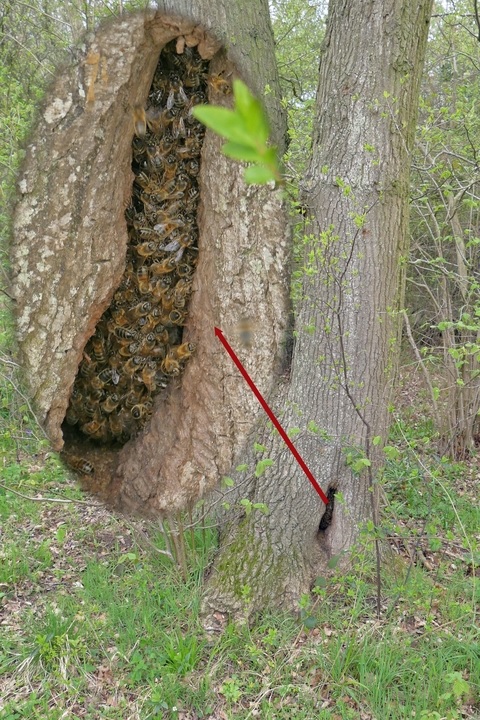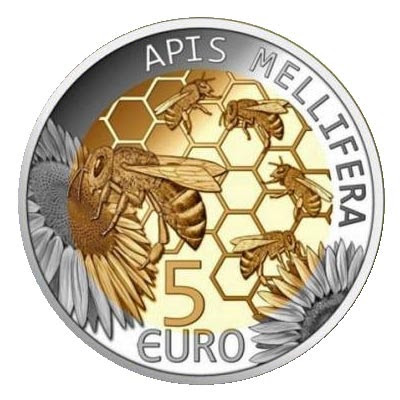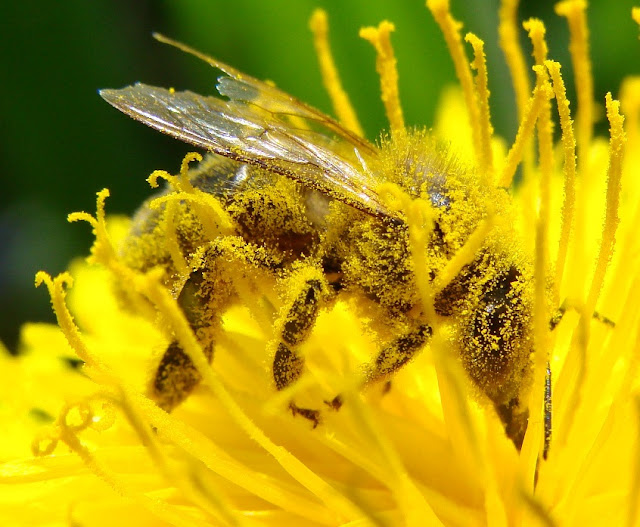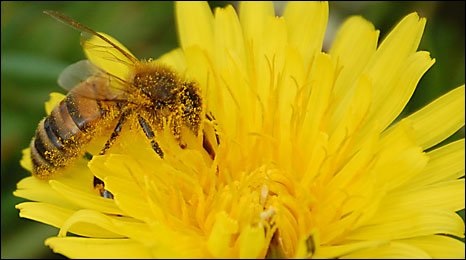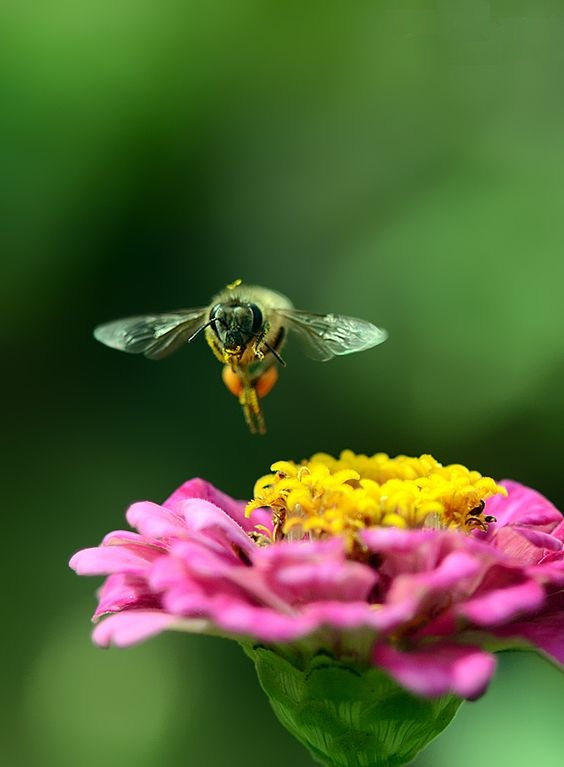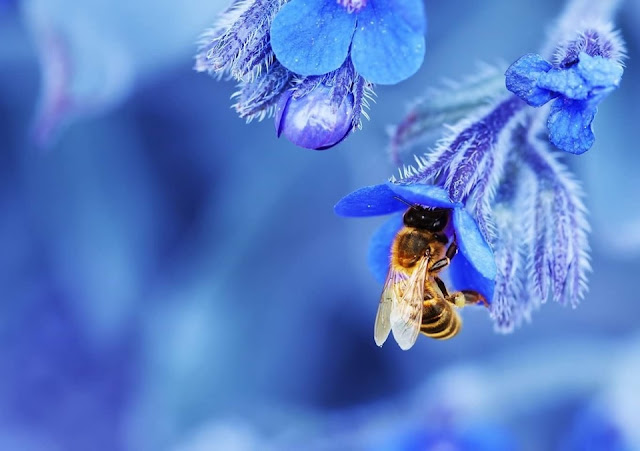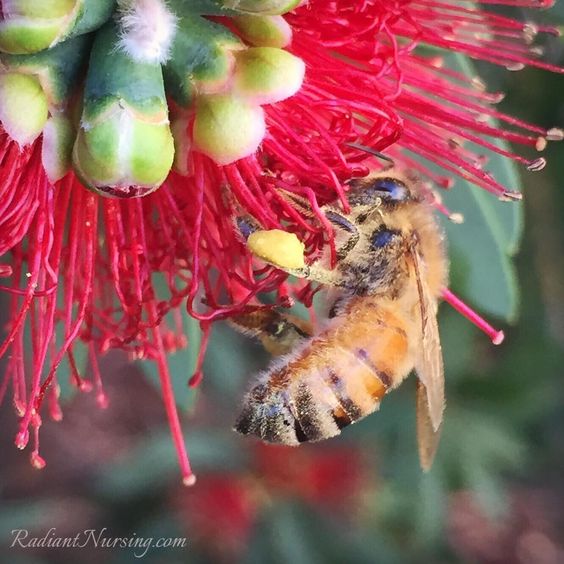
Colombia portal apicola sin fronteras, informativo he inductor del gremio apicola, agro negocios enfocados a la industria apicola en crecimiento, ubicados en plena cordillera de los andes, en el parque natural nacional de los nevados, la vitrina apicola colombiana abre sus puertas a la nación y al mundo
Chat en vivo
miércoles, 26 de febrero de 2020
MONEDA CON ABEJA - COIN WITH BEE.
MONEDA CON ABEJA - COIN WITH BEE.

1922, ITALIA, 10 CENTAVOS, ABEJA DE LA MIEL, MONEDA FUERA DE CIRCULACIÓN.
1922, ITALY, 10 CENTESIMI, HONEY BEE, COIN UNCIRCULATED
5 BENEFICIOS DEL POLEN DE ABEJA - 5 BENEFITS OF BEE POLLEN.
5 BENEFICIOS DEL POLEN DE ABEJA - 5 BENEFITS OF BEE POLLEN.

Las proteínas, las hormonas y las vitaminas que contiene hacen que sea una alternativa muy indicada para preservar el sistema inmune durante los cambios de estación.
El polen lo elaboran las propias abejas una vez que lo transportan de las platas al panal.
Tiene una apariencia en forma de gránulos amarillos o anaranjados que puede consumir en grano, polvo o en cápsulas en forma de suplemento.
Se destaca por las proteínas, las hormonas y las vitaminas que contiene y que aportan numerosos beneficios a la salud del organismo:
1. REGULA LOS PROCESOS DIGESTIVOS
Sus propiedades anti inflamatorias y anti bacterianas combaten las diarreas y el estreñimiento.
Además reducen el dolor y las molestias que causan estos problemas al mismo tiempo que rebajan la hinchazón.
El consumo de polen también está indicado en el caso de sufrir problemas hepáticos.
2. MEJORA LA VISIÓN
El zinc y la vitamina C que contiene se encargan de prevenir la oxidación celular que afecta a los ojos con el paso del tiempo, y de prevenir la falta de visión y otros problemas oculares, como son la degeneración macular, las cataratas y otras enfermedades.
3. ESTIMULA EL ESTADO ANÍMICO
El polen de abeja calma los episodios de estrés, ansiedad, nerviosismo y depresión haciendo que nuestro estado de ánimo se mantenga en calma y lejos de la irritabilidad y la tristeza que pueden causar estos cuadros. Además, estimula la mente mejorando nuestra capacidad intelectual.
4. ALIMENTO ENERGIZANTE
La ingesta de polen incrementa los niveles de energía necesarios para el día a día, de manera que elimina la fatiga, baja la tensión arterial y fomenta la capacidad de trabajo haciendo que nos cansemos menos.
Es ideal para recuperar la vitalidad de forma natural.
5. ES UN COSMÉTICO NATURAL
Tiene funciones dermatológicas que mejoran la apariencia de la piel: desde la disminución de las arrugas o la reducción del acné, hasta combatir el exceso de grasa y la flacidez.
Aunque su consumo favorece una acción interna, algunos cosméticos lo contienen como ingrediente para complementar su efecto. También está indicado en las personas que padecen psoriasis, eccemas o lupus.
AGUIJÓN DE ABEJA, PUNTA DE ALFILER - BEE STINGER, TIP OF A PIN.
AGUIJÓN DE ABEJA, PUNTA DE ALFILER - BEE STINGER, TIP OF A PIN.

La nitidez de un aguijón de abejas se exhibe aquí en comparación con la punta de un alfiler.
El veneno de abeja es una mezcla de histamina, feromonas, enzimas, péptidos, aminoácidos y otros ácidos, con 63 componentes en total. Las principales enzimas presentes son fosfolipasa a, hialuronidasa y lecithinase; mientras que los péptidos principales son melitina, apamin y péptido 401.
The sharpness of a bee stinger is displayed here compared to the tip of a pin.
Bee venom is a mixture of histamine, pheromones, enzymes, peptides, amino acids and other acids, with 63 components in total. The main enzymes present are phospholipase A, hyaluronidase, and lecithinase; while the main peptides are mellitin, apamin and peptide 401.
APARATO VISUAL DE LAS ABEJAS - VISUAL BEE APPARATUS.
APARATO VISUAL DE LAS ABEJAS - VISUAL BEE APPARATUS.
El aparato visual de las abejas está formado por dos grandes ojos compuestos situados en posición dorso-lateral de la cabeza y tres pequeños ocelos (pequeños ojos) organizados en triangulo en la parte frontal de la misma.

Los ojos compuestos formados por 6000 omatidios no ven con nitidez, por ello las abejas tienen que acercarse a una distancia de 5 cm de una flor para distinguirla de las plantas y hojas; aunque para esta labor utilizan también las antenas que son el olfato, oído y tacto de las abejas, describe la especialista.
En cuanto a la de percepción de los colores las abejas perciben los colores del mundo que las rodea de manera muy distinta respecto a los vertebrados superiores, los pétalos pueden parecer de color uniforme pero éstos presentan áreas que reflejan la luz ultravioleta que guían las abejas hacia la fuente de polen, garantizando de esa manera la polinización, destaca la misma especialista.
DISPOSITIVO VISUAL DE LAS ABEJAS - VISUAL BEE DEVICE.
Los ojos simples “ojos primitivos” llamados ocelos, estos fotorreceptores no perciben imágenes sino solamente la intensidad de la luz, incluida la luz polarizada, de esa manera pueden localizar el sol también en condiciones nubladas y por eso resultan tan importantes para su orientación.
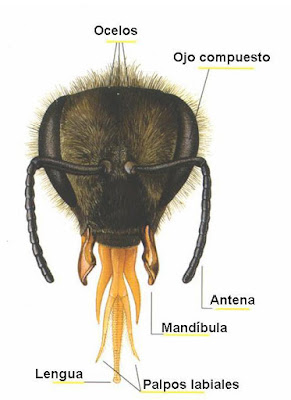
Las abejas al ocaso del día aprovechan esta percepción de intensidad lumínica solar para estimar la hora del día y calculan sí disponen de tiempo suficiente para recorrer la distancia de vuelta a su colonia.
Siendo el objetivo de las abejas encontrar el polen escondido en las flores más llamativas, entonces adaptan su visión en función de su vuelo o búsqueda de alimentos. Y los tres ojos primitivos adicionales le ayudan a saber la hora solar.
Además tienen una elevada sensibilidad óptica al movimiento, los pequeños y rápidos movimientos son percibidos de manera clara, como un pase de fotografías sin movimiento.
VISUAL BEE APPARATUS.
The visual apparatus of the bees consists of two large compound eyes located in the dorso-lateral position of the head and three small ocelli (small eyes) organized in triangle in the front part of the same.
The compound eyes formed by 6000 omatides do not see clearly, so the bees have to approach a distance of 5 cm from a flower to distinguish it from plants and leaves; Although for this work also the antennas that are the smell, the ear and the touch of the bees are used, the specialist describes.
As far as the perception of the colors of the bees perceive the colors of the world that surrounds them very different from the superior vertebrates, the petals can appear of uniform color, but these have areas that reflect the ultraviolet light that guide the bees toward the source Of pollen, thus ensuring pollination, stresses the same specialist.
The simple eyes "primitive eyes" called ocelli, these photoreceptors do not perceive images but only the intensity of light, including polarized light, so that they can locate the sun also in cloudy conditions and therefore are so important for their orientation.
Bees at dusk of the day take advantage of this perception of the intensity of sunlight to estimate the time of day and calculate if they have enough time to travel the distance back to their colony.
Being the goal of bees find hidden pollen in the most striking flowers, they adapt their vision based on their flight or the search for food. And the three additional primitive eyes help you to know the time of the sun.
In addition they have a high optical sensitivity to the movement, the small and fast movements are perceived in a clear way, like a pass of photographs without movement.
COMO RECOLECTAN NÉCTAR LAS ABEJAS - HOW TO COLLECT NECTAR BEES. (SPANISH - ENGLISH)
COMO RECOLECTAN NÉCTAR LAS ABEJAS - HOW TO COLLECT NECTAR BEES. (SPANISH - ENGLISH)
El néctar es una solución acuosa, de una humedad que ronda desde el 30 al 70 %, que las plantas producen a través de sus glándulas nectarinas, generalmente ubicadas en la base de la flor.
Las abejas pueden percibir el aroma y la calidad del néctar de las flores mediante sus antenas.
El trabajo de recolección empieza cuando la temperatura es lo suficientemente alta (13ºC) como para que el frío no entumezca sus alas y puedan batirlas.
Esto en primavera y verano ocurre a partir de primeras horas de la mañana, por lo que es normal que comiencen su actividad al poco de amanecer, prolongándola casi hasta el oscurecer.
La abeja succiona el néctar de los nectarios de las flores y éste es depositado en el buche melario que tiene en la región torácica.
Las abejas pueden distinguir la edad, el tipo y el estado de las flores, eligiendo así el néctar adecuado en cada momento.
Dependiendo de la planta de donde proviene, consiste fundamentalmente de una solución de varios azúcares, compuestos nitrogenados, minerales, ácidos orgánicos, vitaminas, pigmentos y sustancias aromáticas que están presentes sólo en concentraciones bajas.
Cuando un abeja elige una planta se posa sobre ella e ingiere la mayor cantidad posible de néctar, que luego transporta hasta la colmena.
La producción de néctar no es continua, varia conforme a las condiciones florales de cada planta, a las características climáticas y a la intensidad del brillo solar de una zona en particular.

Generalmente, las abejas retornan varias veces a la misma planta hasta que consumen todo el néctar que contiene.
Este proceder es adecuado porque la obrera reduce los tiempos y la energía necesaria para realizar los transportes.
Se ha comprobado que en ocasiones la abeja liba un tipo de planta por la mañana u otro diferente por la tarde.
Este comportamiento responde a que las distintas flores tienen diferentes horarios para segregar su néctar y la necesidad de aprovechar mejor el trabajo de libar.
También, tomando en cuenta estas características, el néctar tendrá variantes y, por ende, la miel derivada de este también las tendrá. El sabor y las propiedades de la miel dependen de las fuentes nectarias Por eso la miel de diferentes regiones y de distintos períodos de afluencia de néctar tiene variaciones de sabor y color.
Collecting nectar (English)
The nectar is an aqueous solution of a round humidity from 30 to 70%, the plants produced through its nectaríferas gland generally at the base of the flower.
Bees can smell the aroma and quality of flower nectar using their antennae.
The collection starts working when the temperature is high enough (13 ° C) so that the cold can numb their wings and beat them. This occurs in spring and summer from early in the morning, so it is normal to start up shortly after sunrise, prolonging almost until dark.
The bee sucking nectar from the nectaries of flowers and it is deposited in the crop melario having in the thoracic region.
Bees can distinguish the age, type and condition of the flowers, thus choosing the appropriate nectar at all times.
Depending on the plant from which consists essentially of a solution of various sugars, nitrogen compounds, minerals, organic acids, vitamins, pigments and aromatic substances are present only in low concentrations.
When a bee alights choose a plant on it and eat as many of nectar, which is then transported to the hive.
Nectar production is not continuous, varies according to the conditions of each plant flowers, to the climatic characteristics and intensity of sunshine in a particular area.
Generally, bees returning several times to the same plant until they consume all the nectar it contains. This approach is appropriate because the working reduces the time and energy needed for transport.
It has been found that sometimes the bee sucks a type of plant in the morning or different afternoon. This behavior reflects the fact that different flowers have different schedules to secrete their nectar and the need to get more work suck.
Also, taking into account these features, the nectar will variants and therefore honey derived from this also will. The flavor and properties depending on the sources honey nectar. So honey from different regions and different periods of nectar flow has flavor and color variations.
Suscribirse a:
Comentarios (Atom)
Entrada destacada
UNA BREVE MIRADA A LA APICULTURA COLOMBIANA
Colombia es un país privilegiado para innumerables actividades productivas, generadoras de riqueza, y si hablamos de economía agrícola, ...

-
TETRAGONISCA ANGUSTULA uno de los grupos de abejas sociales mas interesante es aquel de las abejas sin aguijon. se encuentran distribuid...
-
PARATRIGONA PELTATA. estas pequeñas abejas que se pueden llegar a confundir con nannotrigonas con la diferencia del color amarillo que r...
-
Propiedades de la miel Abeja, colmena y miel. Tres elementos de una misma cadena natural, que dan forma e identidad al milagro ...











